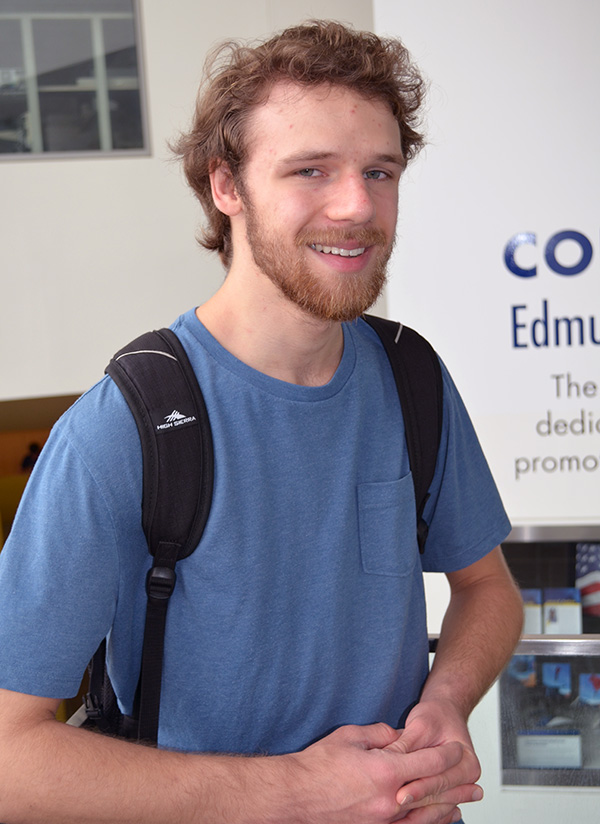
Gabe Grajewski
Drexel University is celebrated throughout the world for its cooperative program. Here at the College of Engineering, some 99% of students fulfill at least one co-op during their undergraduate years. But what exactly does a co-op do all day: what do they have to know ahead of the job, what kinds of jobs are available, and what time is lunch? In this monthly column, we focus on one undergraduate for an hour-by-hour deconstruction of the co-op experience.
This month, we introduce junior Gabe Grajewski, a BS/MS in the Department of Civil, Architectural and Environmental Engineering.
Name: Gabe Grajewski
Class: Class of ’20, BS/MS, Department of Civil, Architectural and Environmental Engineering
Co-op: Department of Commerce, National Institute of Standards and Technology (NIST), Gaithersburg, MD
Work Performed: Research position in the Division of Indoor Air Quality and Ventilation
When: Spring/Summer 2017
| 6 a.m. |
Wake up, make breakfast (cereal). Live a few hundred yards from NIST’s “enormous” campus in an apartment with other PhD and post-doc researchers; talk with them over breakfast. One co-worker is in the nuclear reactor materials science building, a “really neat” building. |
| 7 a.m. |
Drive seven minutes to work. Check email. Start week by going out to the net zero test facility to check filters to make sure working properly, and take readings. Facility is equipped with technology like solar panels, geothermal devices, etc. to make it a net zero facility. “By this point, it has been up for several years, so it is functioning at less than zero: it is selling electricity back to the power company.” |
| 8 a.m. |
Work on creating models for simulation using CONTAM, NIST’s multizone airflow/contaminant modeling program, converting them from IP Units to metric so they could be scaled proportionately; couple them using Energy+, the Department of Energy’s simulation software, so the coupled simulations would generate more accurate representation of both the heat transfer/energy/electricity costs and building airflows/pressure differences/contaminant transport; get guidance on this from the NIST lead programmer; learn coding and trouble-shooting techniques that extend far beyond ENG 121 and 122 classes; spend up to eight hours a day on this for at least one month.
Once a week, log in remotely and pull data from the net zero test facility for processing; work in LabView, one of the programs Drexel teaches. “I remember thinking, when am I ever going to use this? Lo and behold, I used that and MATLAB (MATrix Lab).” |
| 12 noon |
Usually bring lunch and eat outside under a giant willow tree with another intern. “It is really peaceful. The tree is just so big and dense, sort of secluded.” Occasionally go out to eat with co-workers. |
| 1 p.m. |
Pick back up on work from the morning, or start a new project: for example, investigating thermal stratification in buildings using multiple temp sensors for high resolution data; set up and use tracer gas systems to determine the effect of wind and indoor-to-outdoor temperature differentials; retrieve data, put on a flash drive.
Also, in prep for a major test, help rewire all the instruments in the test house reusing equipment and data acquisition systems from previous years; very “hands on” work. |
| 4:30 p.m. |
Leave work. During week, go home, talk with roommates, all of whom are from different cultural backgrounds; cook and share meals; run in the evenings. Weekends, drive to national parks like Shenandoah or Catoctin. “It was a really scenic area with gorgeous old houses with wineries right next to them.” |
Takeaway Message: “Apply for the jobs that you really don’t think you could get, and always be willing to go with something that sounds different because you’ll likely not be able to get that experience again. You can always go and find the more normal, conventional co-op some other time. Also, you should not be afraid to put yourself out there. For me, that resulted in a really unique and important experience.
“I didn’t think I’d be able to do this co-op. I was relatively unfamiliar with the field. It was a research opportunity, and beforehand it implied that I would be learning quite a bit and be doing some challenging things. I’d say that was one of the greatest things about the job, the sheer variety of things I got to do. Everyone is uncomfortable to show their lack of skills or their weaknesses. But the people at NIST were very encouraging. They taught me a lot, and they were always willing to work with me and answer questions to help me strengthen my skill set. I thought that you couldn’t do anything technical or complex on your first co-op. But the co-op was, in fact, everything they advertised it to be.”